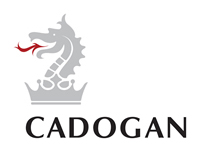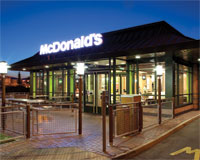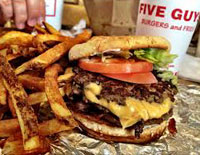
They call it mixology – the clever art of blending, say, a shot of gin and a little vermouth to make a first-rate dry martini. These days no fashionable bar is complete without its mixologist.
And shopping centres? They have mixologists, too, although they tend to double as landlords. For many of them, achieving the perfect mix has become a lifetime’s work.
Similar rules apply for mixing a shopping centre as for mixing a cocktail. Some ingredients do not go together – ever (see box overleaf). Others might as tastes change and become more educated. But the big problem from the retail mixologists is knowing how far to risk a way-out choice.
If they get it wrong, it means taking a hit to the centre’s reputation and the landlord’s income flow. It could also upset other retail tenants – an empty unit next door could be seen as an embarrassment at best or a catastrophic failure at worst.
Three landlords – intu, Cadogan Estates and Grosvenor – have chosen to operate at different levels of retail risk to achieve their perfect mix.

Martin Breeden, regional director of intu, suggests that when he mixes, financial risk and covenant strength weigh heavily in the balance.
“Financial strength is important, obviously,” he says, while insisting its not the only thing that matters. “We put ourselves in the retailers’ shoes. We ask whether they want to be alongside their peers, what suits their brands – we know they will look closely at their neighbours.
“If someone doesn’t fit we’ll be frank and tell them – we’ll say other retailers will be deterred by their presence; it’s about brand image.”
Intu isn’t averse to taking risks on new names – womenswear brand Glamorous is the latest, trading up from online to take 1,900 sq ft at the Trafford Centre. It will also risk pop-ups like Ratchet, the streetwear brand founded by Dhillan Bhardwaj, now trading at Lakeside. But at the back – or perhaps the front – of Breeden’s mind is what customers want. And what they want is what they know. “Customers want the brands,” he says. That means the mixing is mostly about combining well-known or emerging names, and these tend to be well-backed and low risk. At least, that’s the hope.

Cadogan Estates sits at the other end of the spectrum. Financial risk comes second to reputational risk in their world view, and that makes for a subtly different approach to mixology. It means that about half its retail tenants are independents.
Chief executive Hugh Seaborn says: “You start by asking whether the brand is right, and look at the financials second. If you do it the other way round then you have less choice,” he says. “Generally our business is risk-averse, but in retail lettings we accept more risk. We park the issue of covenant strength, and look more at the appeal. We know it can damage a locality when retailers open and close, so the risk we’re taking is more about the reputation of the area, not the reputation of the operator,” he says.
This reputational risk looms large for Cadogan, and it means it is allergic to empty units and keen to see the wider story. “We have a bigger position in the local community,” says Seaborn.
Cadogan’s approach has led to new discoveries such as Emilia Wickstead.
Sitting somewhere between the two approaches is Grosvenor, whose celebrated Liverpool One scheme has many of the community aspects of the Cadogan Estate, and the regular branded-box retailing of an intu shopping centre.

Miles Dunnett, director of portfolio management at Grosvenor Fund Management, certainly isn’t careless about covenant strength. On the other hand, it’s not the be all and end all.
“The danger is in turning vanilla,” he says. “We could go for some bog-standard operators, but we haven’t. Right from the start at Liverpool One we had occupiers like Lunya, a tapas bar with 2,500 sq ft, an independent which has now signed a new 10-year lease.”
“Yes, security of cash flow is important, but the scale of Liverpool One means we have a duty to provide variety, and that means risks, and we’ve certainly done things that didn’t come off, or have cost us,” he says.
Early efforts to include homeware in the retail mix didn’t work – the 25,000 sq ft unit is now being carved up for restaurants. Meanwhile, £200,000 a year of rental income is foregone to allow space for pop-ups – space that could have been let to big brands. Instead of an international name the unit has recently played host to a local asparagus farmer and a new swimwear label.
For independent retailers it can be a challenge to understand a landlord’s appetite for risk – a challenge made harder by independent-friendly talk that isn’t always converted into action. So says James Woodard, associate at Sanderson Weatherall in Bristol.
His independent retailer and restaurant clients are confused, he says. “You see schemes marketed at the independents, but it’s very expensive for them, and even if an independent wanted a unit, a national name would trump them because landlords want the nice safe covenant. There is often that disconnect between the way a scheme is marketed, and the way it is actually let,” he explains.
“Landlords of schemes talk a good game in terms of trying to get the balance right between types of occupiers. With the burgeoning leisure and restaurant scene they are often at pains to target more independent operators, with a view to presenting themselves in the most positive light.

“What has actually happened is new national operators have emerged, which allows landlords to put in a very ‘of the moment’ tenant line-up, but which is actually still just new names from older brands. The likes of Byron, Wahaca, Bill’s, Côte, Burger & Lobster and Busaba Eathai are all relatively new to the provinces, so can be announced with a splash, but are actually well-funded national operators, which can meet the financial demands of being in prime shopping centres.
“They get to offer the public an exciting list of new progressive brands, without actually taking any hit on covenant.”
Of course, relying on national names comes with a risk of its own. In Woodard’s market, noodle bar Tampopo recently pulled out of Cabot Circus having been in residence since 2008. Head office decided to pull out – and that’s that.
Mixology is a delicate business. And despite their best efforts, not everyone gets it right.

Forbidden mixes
These days the rules on mixing are more relaxed than they used to be – but there are still quirks. Nobody EG spoke to could see any reason not to put Ann Summers next to Mothercare, but everyone agreed McDonalds should never be within sight of another food and beverage outlet. “Casual dining brands don’t want them close,” one senior figure confided.
Andrew McVicker, director at niche agent FSP, says: “Operators such as H&M are now stipulating in their leases who some of the co-tenancies must be, as they realise the value in having adjacent tenants that complement their brand,” McVicker says.
“Examples of retailers that like to cluster together include classic brands such as Phase Eight, The White Company and White Stuff – as they target a similar customer. By locating in close proximity, the sum of their offer is greater than if they were trading in isolation.”
He adds: “On the flipside, many brands had initial reservations about being next to Primark.”

Some new faces
Young brands carry risks – but risks worth taking. So says Tom Raban, partner at Montagu Evans, and one of those advising emerging brand Five Guys on its restaurant roll-out.
Growing from a first UK outlet in 2013 to 28 today, the business is still in its infancy. “We haven’t yet got a set of audited accounts showing the profits because it’s all being ploughed back into new openings,” says Raban. “But centre owners are fixated with increasing dwell-time – and getting shoppers to turn up – and they will take some risks with tenants because a dynamic mix is absolutely vital.”
The upside for landlords is that, having splashed £750,000 or more on a restaurant fit-out, the tenant is going to want a longish lease over which to spread the cost. That means 10 or 15 years.

Emelia steps out
New Zealander Emelia Wickstead is now installed in a Sloane Street fashion store with a chic 1950s feel. The fashion designer’s arrival there – from her home in Cadogan Square – is thanks to the Cadogan Estate’s unique approach to retail mixology and covenant risk.
Today the Duchess of Cambridge and prime ministerial consort Samantha Cameron are among her customers, but her business started small with a £5,000 loan from her boyfriend and a gentle nudge from Cadogan.
Cadogan chief executive Hugh Seaborn explains: “We encourage pop-ups, which are low cost to occupiers, and to us, even if they aren’t very rewarding financially. Mostly they come and they go, but some stick, and Emelia is one of those.”











